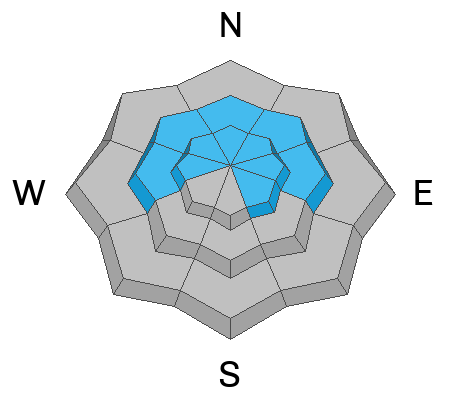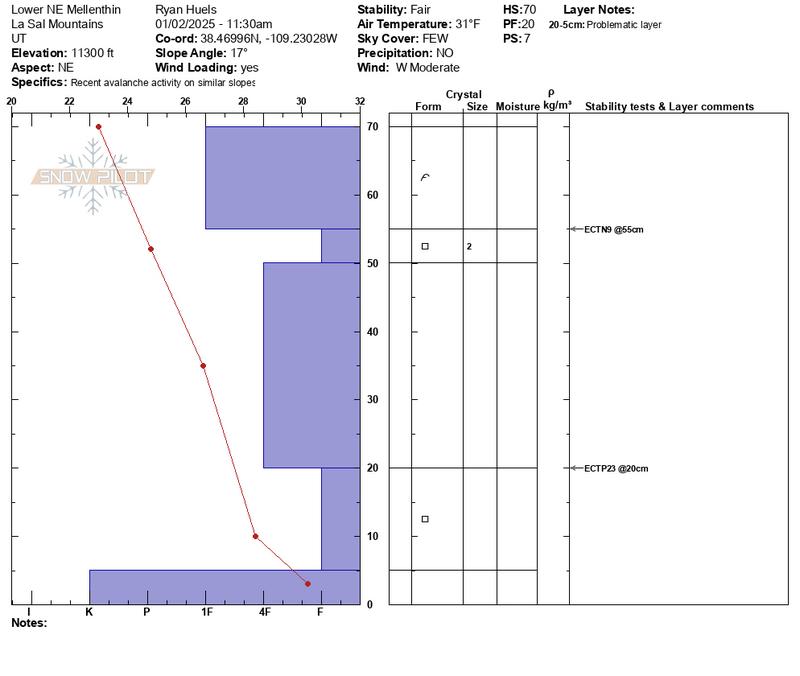Forecast for the Moab Area Mountains

Issued by Eric Trenbeath on
Saturday morning, January 4, 2025
Saturday morning, January 4, 2025
The avalanche danger is MODERATE on steep slopes above treeline that face W-N-E-SE, with the greatest danger on wind loaded slopes facing N-E. In these areas, winds have built slabs over top of weak faceted layers and human triggered avalanches 1-3 feet deep are possible. Near treeline the problem is less widespread but a MODERATE danger still exists on slopes facing the north half of the compass. Careful snowpack evalution is necessary before riding terrain steeper than 30 degrees.
Most other terrain has LOW danger. Small avalanches on isolated terrain features are possible.
It's still low tide out there and rocks, stumps, and logs are lurking just beneath the surface.
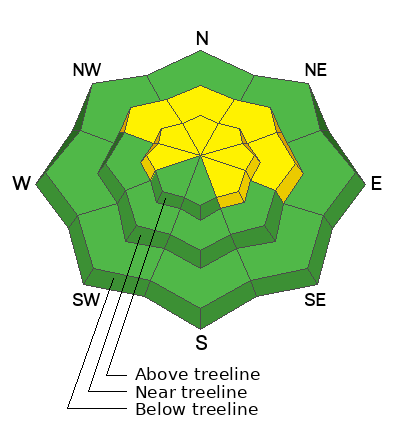
Low
Moderate
Considerable
High
Extreme
Learn how to read the forecast here


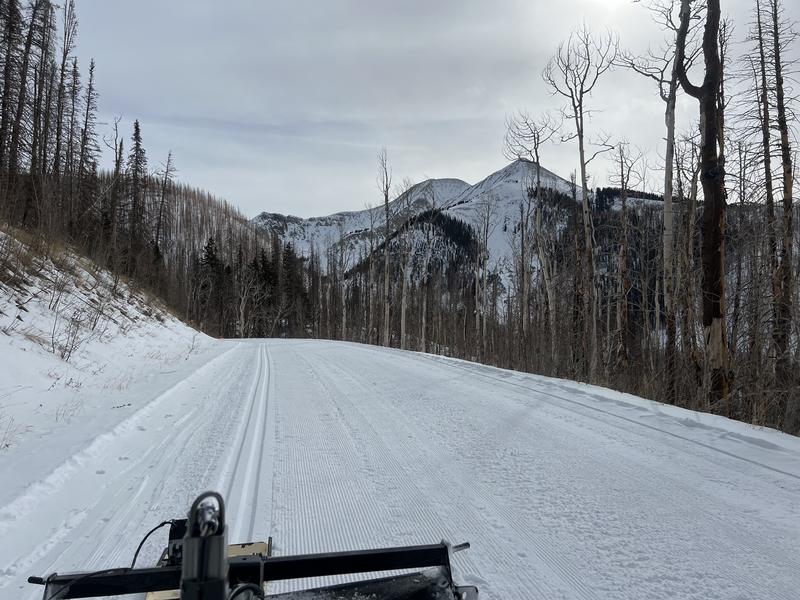
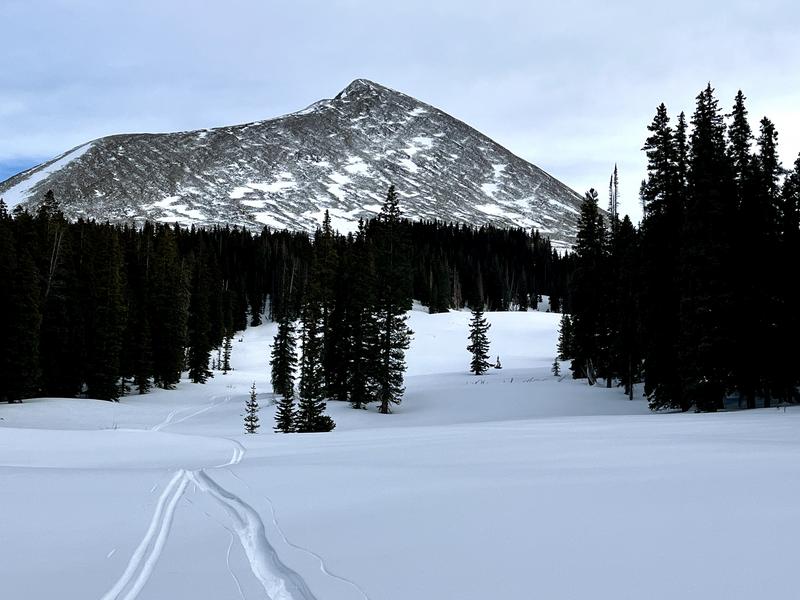 A tale of two snowpacks. Sun and wind exposed slopes are blasted down to the rocks. Soft snow remains on sheltered slopes below treeline.
A tale of two snowpacks. Sun and wind exposed slopes are blasted down to the rocks. Soft snow remains on sheltered slopes below treeline. 